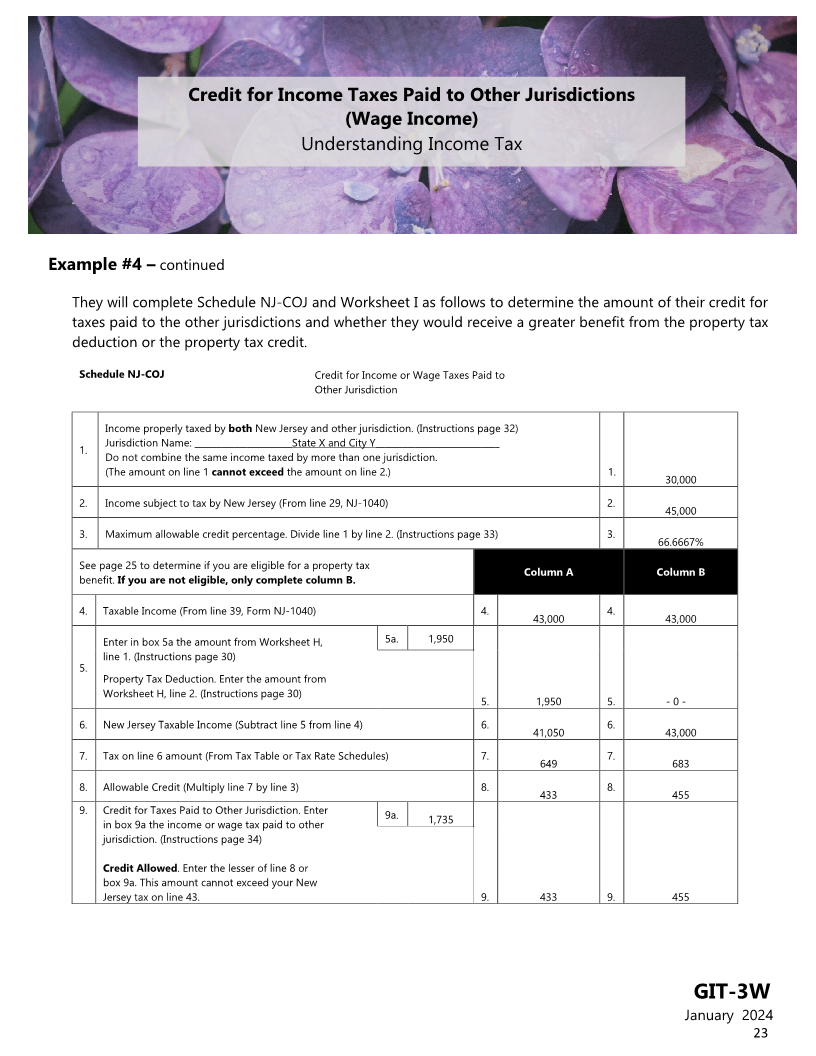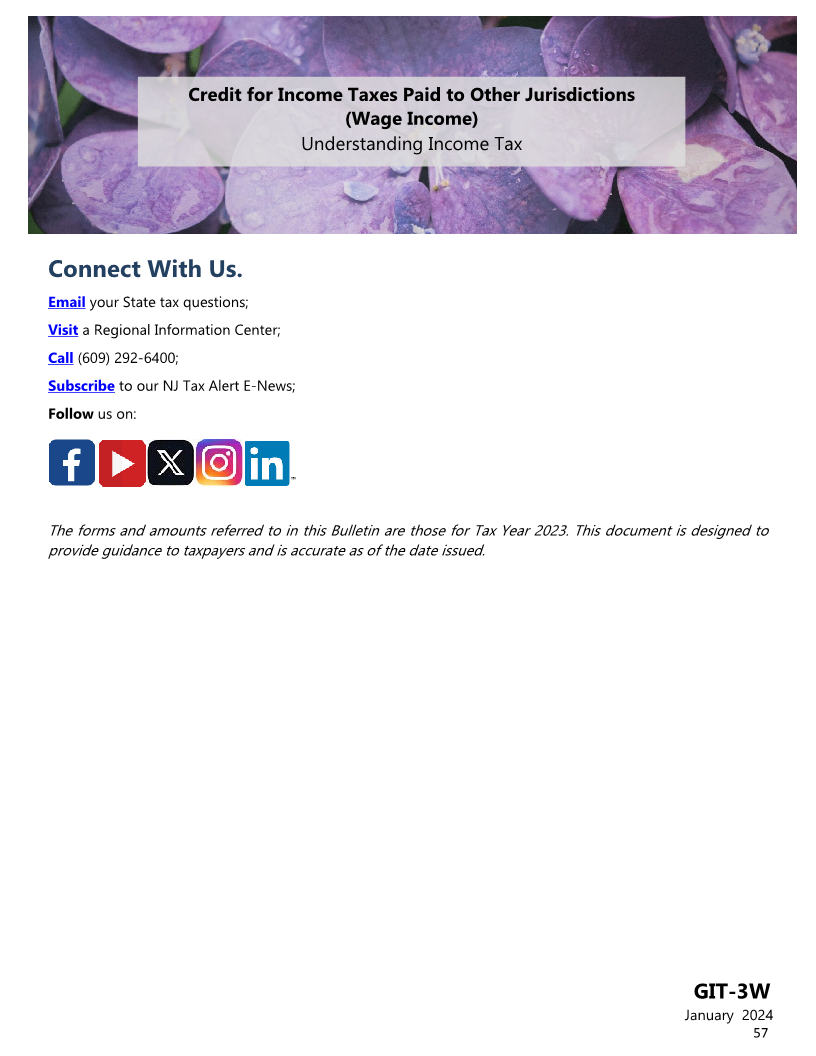
Enlarge image
Credit for Income Taxes Paid to Other
Jurisdictions (Wage Income)
Understanding Income Tax
New Jersey’s flower is the Meadow Violet.
Purpose of This Publication ................................................................................................................................. 3
Purpose of the Credit ............................................................................................................................................ 3
Components of the Credit Calculation ................................................................................................................ 3
Jurisdiction .................................................................................................................................................................................................. 4
Income Actually Taxed by Another Jurisdiction ............................................................................................................................ 4
Income Sourced to Another Jurisdiction v. “Worldwide Income” ..................................................................................... 4
Income Allocations Allowed by the Other Jurisdiction .......................................................................................................... 5
Adjustments (Deductions) Allowed by the Other Jurisdiction ............................................................................................ 5
Income Subject to Tax by More Than One Jurisdiction Within One State ..................................................................... 5
Income Properly Taxed by Another Jurisdiction ........................................................................................................................... 5
Income Properly Taxed ...................................................................................................................................................................... 5
Income Not Properly Taxed ............................................................................................................................................................. 6
Dual State Residents ........................................................................................................................................................................... 6
Income Actually Taxed by Both NJ and Another Jurisdiction .................................................................................................. 7
Income Taxable in Another Jurisdiction Exempt From Tax in NJ ....................................................................................... 7
Other Jurisdiction’s Additions to Income ................................................................................................................................... 7
Income Taxed by New Jersey ............................................................................................................................................................... 7
Actual Tax Paid to the Other Jurisdiction ........................................................................................................................................ 7
Actual Tax Paid on Income Taxed by More Than One Jurisdiction in a State Outside NJ ....................................... 7
How to Claim the Credit ....................................................................................................................................... 8
Proportional Credit Limitation Formula ............................................................................................................. 8
Completing More Than One Schedule NJ-COJ .................................................................................................. 8
GIT-3W
January 2024
1























































